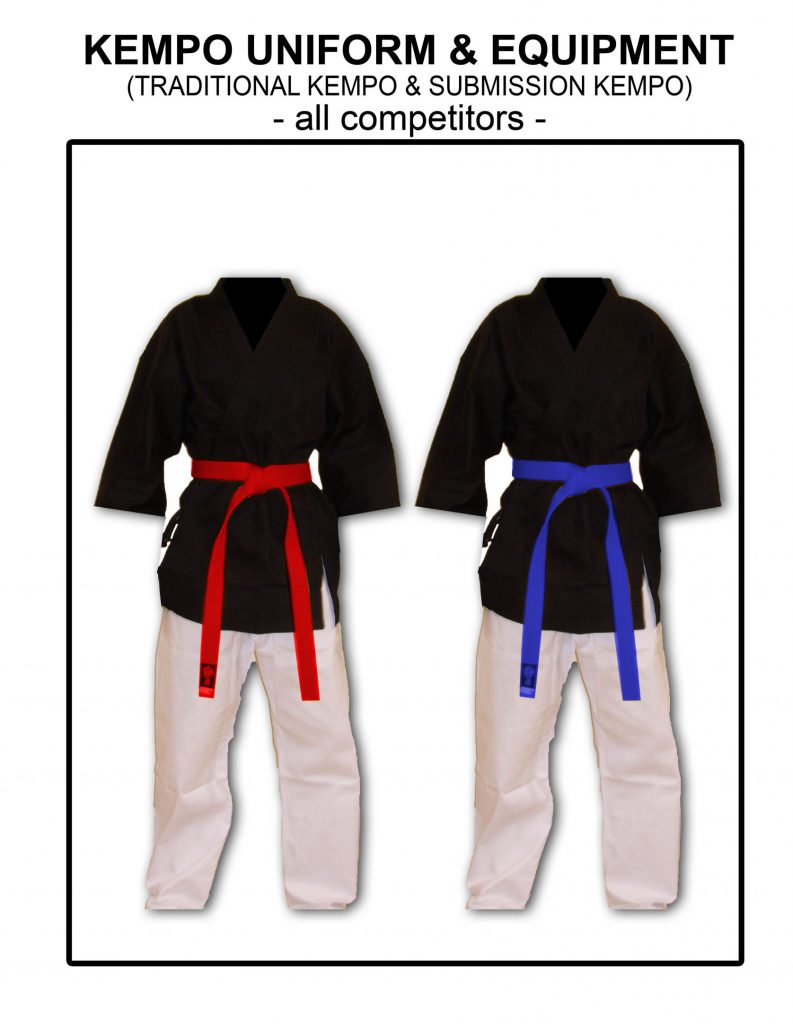WEAPON SELF-DEFENSE
 WEAPON SELF–DEFENSE
WEAPON SELF–DEFENSE
In the Weapon Self-Defense division will be a traditional fight „weapon vs. weapon”. The weapons used for the Self-Defense performances have to look like real weapons but not sharpened. All weapons must be used in a very traditional manner and not in a very modern survival one. The Chairmen of Referees has the final decision in this case.
Teams
There are two (3) kinds of WEAPON SELF-DEFENSE teams:
- MALE teams are composed of two (2) members male, having the same age category.
- FEMALE teams are composed of two (2) members female, having the same age category.
- MIXT teams are composed of two (2) members, male and female, having the same age category.
Age Categories
- 10-12 years old (10 and 11 years old)
- 12-14 years old (12 and 13 years old)
- 14-16 years old (14 and 15 years old)
- 16-18 years old (16 and 17 years old)
- Seniors B: 18-21 years old (18,19, and 20 years old)
- Seniors A: 21-37 years old
- Senior-Masters: +37 years old (over 37 years old)
The time limit of WEAPON SELF-DEFENSE divisions
- the time limit will be 3 minutes.
Disqualification
- if one team is not coming to compete after 1 minute from the last call, will be followed by disqualification.
- when a team stops the performance before the end, disqualification will follow.
- when a member of a team moves out of the competition area, the team will be disqualified.
- when the performance is more than the time limit.
- Presentation
- when the name of the team is announced for the first time by the head referee, the team takes place in an area or on the chair(s) special destinated for.
- when the name of the team is announced for the second time by the head referee, the team has to start their presentation followed by their WEAPON SELF-DEFENSE performance.
- the team walks in front of the head referee, salutes the head referee, and speaks out loud the next information for the jury: country name, number of the team. This information will be made very short, simple, and very clear by the head of the team (Example: Finland, Team 1).
- the head referee gives a signal by a gong to the team to start their performance.
- the team walks to the point they have to start their performance, salute again and start when they are ready to do it. This is the moment when the counter-time will start.
- when the competitor or team is ready with their performance they salute the head referee again, and the head referee gives for the second time a gong-signal. This is the moment when the counter-time will be stopped.
- all the competitors will wait, before and after their performance, outside the competition area in a decent manner.
How to win
- the decision will be taken by the majority of referees.
- the competition in Self-Defense there will be always one team compete against another team.
- the winning team will go in the next round, the losing team is out of the competition.
- the last 4 teams will compete for place 1 to 4 in that competition.
Refereeing and Judging
- the refereeing system within the International Kempo Federation is by having 3-5 referees.
- the referee team is separated into 1 head referee and 2 or 4 side judges.
- in the semi-finals, there are 3 referees from different countries.
- in the finals, there are 3 or 5 referees depending on the organizer staff of the IKF.
- the decision will be taken directly by the referees as follows: the side referees and the head referee will watch in the same direction and they will show the winner of them directly by their bleu or red stick, at once.
- the decision will be taken by the majority of referees.
How to create and how to perform a WEAPON SELF-DEFENSE
- each team must take care of the time limit of their performances.
- each team must perform strictly 4 scenarios which must look like short traditional fights, using Weapon Self-Defense techniques in a traditional but also in a choreographic manner.
- each scenario will be performed just in the real-speed
Note: In Weapon Self-Defense divisions a „scenario” means a traditional fight choreography based on weapon self-defense applications. The way of working a scene is like “ attack, counter-attack, attack, counter-attack ……, and finalization.
Judging System
- Judging must use the following principles:
Presentation: The way of entering the Competition area, the martial attitude, the introduction, the salute, and the way they are closing the performance.
The performance: How was the performance at the normal speed? It was good, it was too slow? It was focused on their techniques?
Working together: How are the competitors working together is this minus, normal or extra good in performance? Are they working as a real team, synchronizing their techniques?
Choreography: How was the choreography? It was realistic? It was realistic enough? It was also attractive and spectacular having inside high standard and level of techniques?
